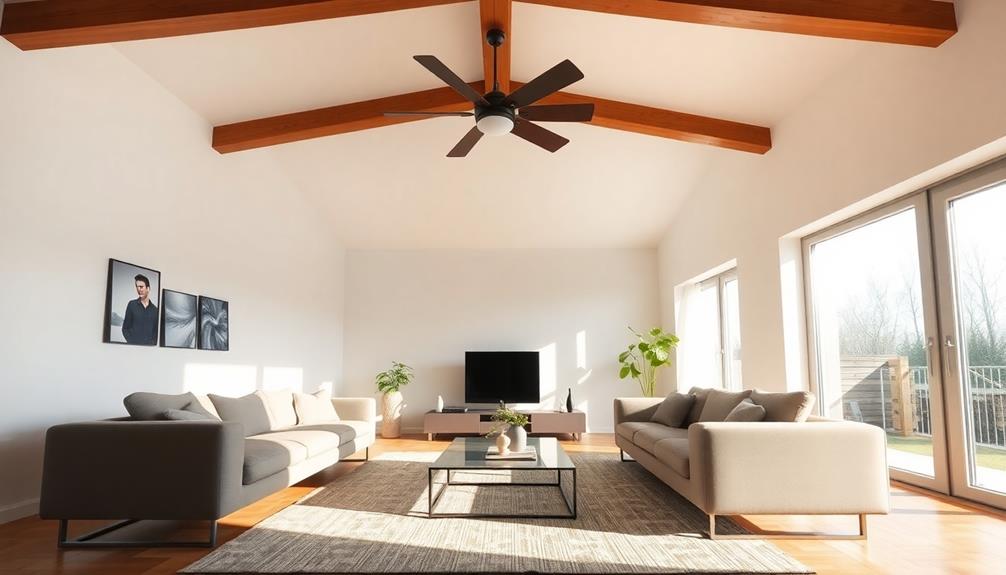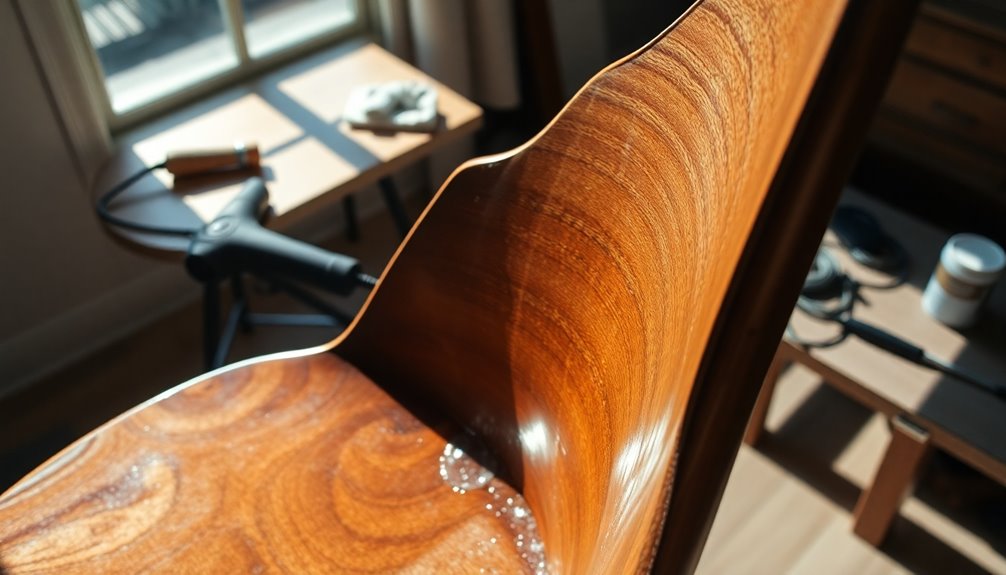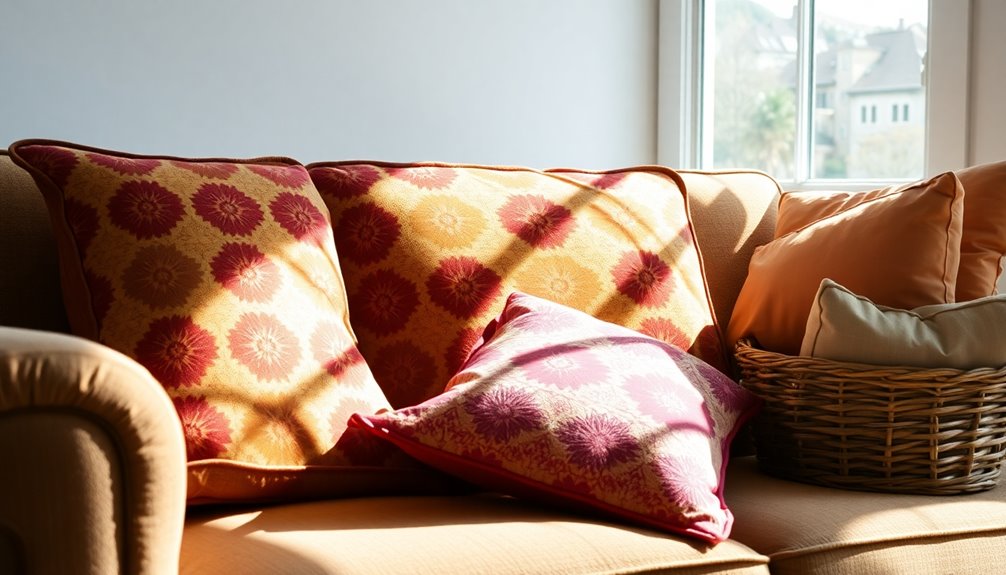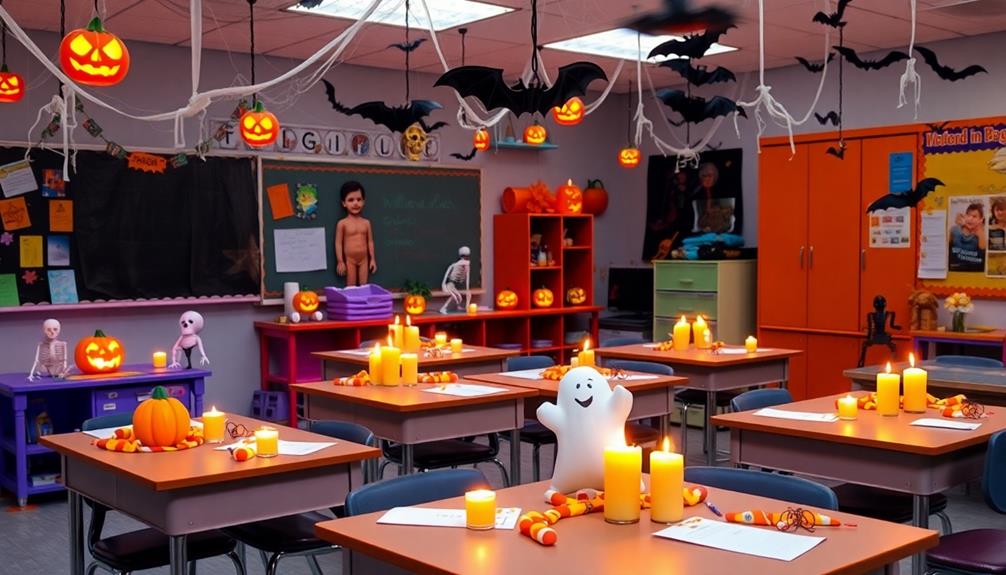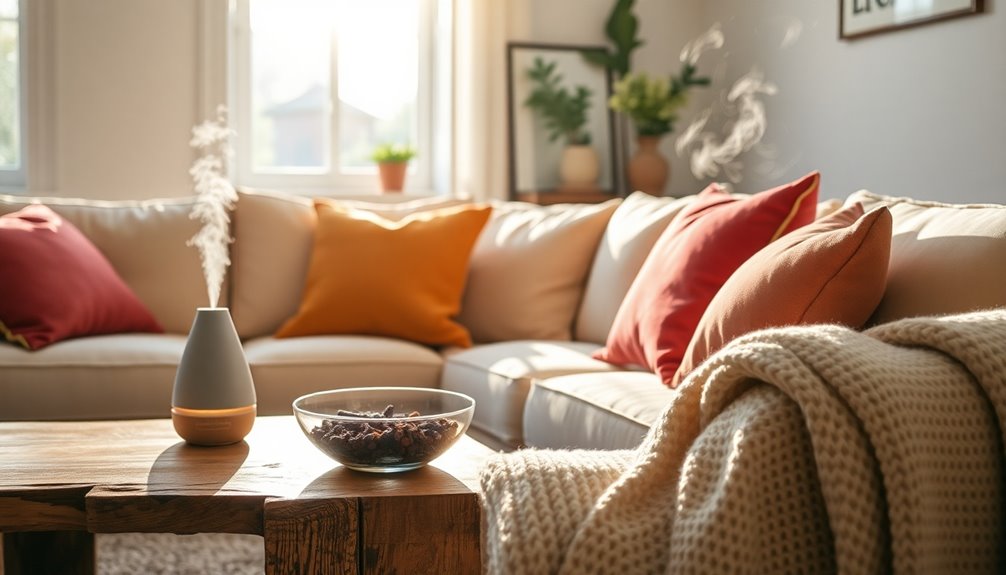Germany faces a **ceiling fan dilemma** due to its **mild weather**, leading to reduced reliance on fans for cooling. Instead, air conditioning is becoming more popular despite strict rules promoting **energy efficiency**. Modern home designs lean towards **minimalism**, making traditional ceiling fans less attractive. Older houses with low ceilings present installation hurdles, prompting homeowners to opt for **portable options**. However, with increasing energy prices and climate change concerns, attitudes may change as new fan designs merge seamlessly with contemporary interiors. Delving into the reasons behind this dilemma provides insights into cooling choices in this distinctive market. Discover more about this intriguing situation and uncover valuable tips for navigating the cooling landscape in Germany.
Key Takeaways
- Germany's temperate climate reduces the demand for ceiling fans, with natural ventilation preferred during warmer months.
- Stringent energy regulations and a focus on efficiency lead to a preference for alternative cooling solutions over traditional ceiling fans.
- The minimalist design trend favors sleek, unobtrusive cooling options, making bulky ceiling fans less appealing to homeowners.
- Architectural limitations in older homes, such as low ceilings, complicate ceiling fan installation and reduce their practicality.
- Climate change and rising energy costs may shift perceptions, increasing interest in ceiling fans as energy-efficient alternatives in the future.
Climate Influence on Cooling Needs
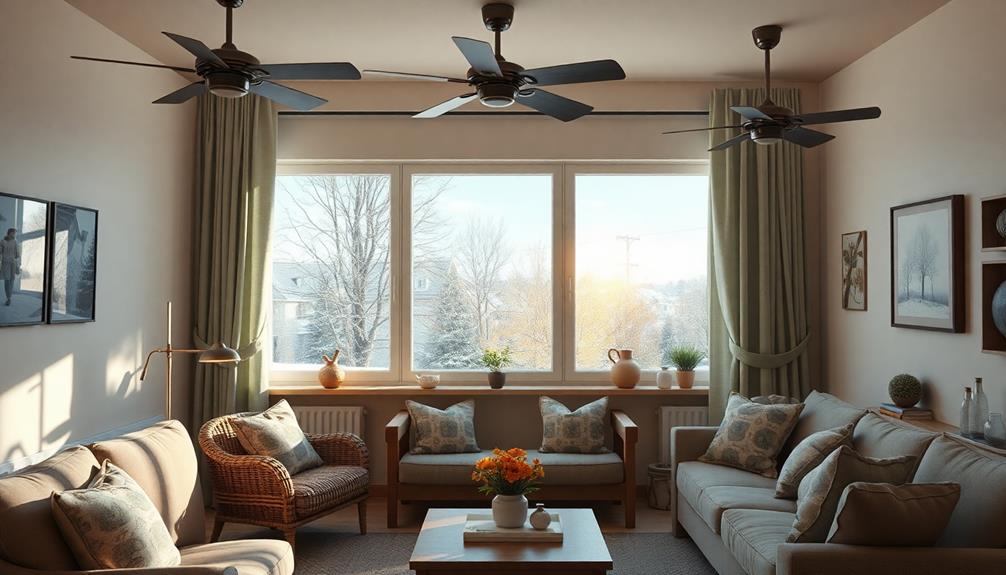
Germany's temperate climate greatly shapes your cooling needs. With mild summers and cool winters, you find less necessity for ceiling fans. Instead, you often rely on air conditioning, which has become more common in homes due to the climate, reducing the demand for ceiling fans.
You likely prefer natural ventilation by opening windows during warmer months, as extreme temperatures are rare. Although climate change could spark interest in energy-efficient cooling solutions, ceiling fans aren't a priority for you right now.
However, using ceiling fans during summer can still help decrease your reliance on energy-intensive air conditioning. In winter, operating them in reverse aids warm air circulation, enhancing your heating efficiency and comfort throughout your home.
Regulations Shaping Energy Choices
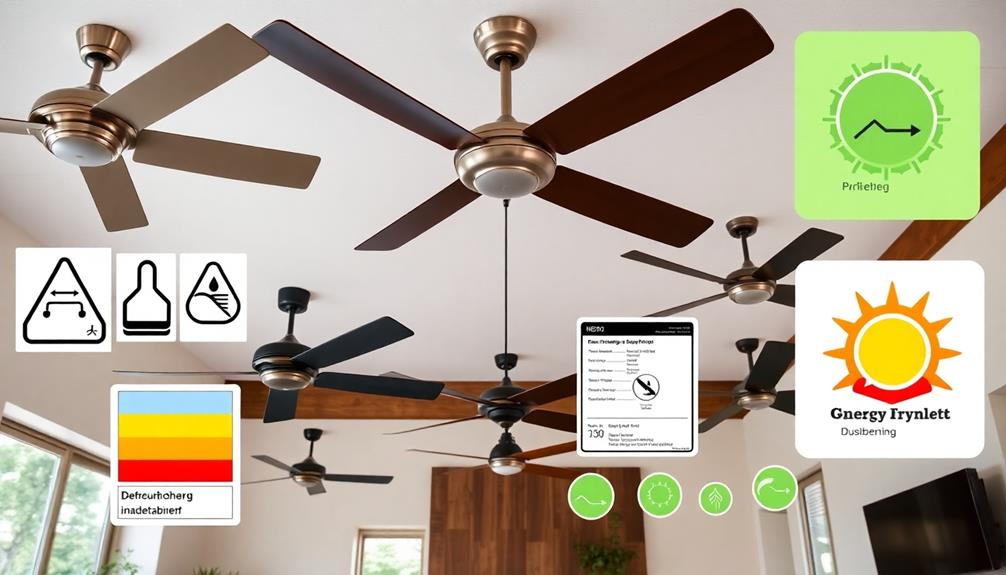
The choices you make regarding cooling solutions in your home are heavily influenced by Germany's strict energy efficiency regulations.
These rules shape your options and often discourage the use of ceiling fans. Here are some key factors to take into account:
- The Energy Efficiency Directive promotes reduced energy consumption.
- Ceiling fans are often seen as energy-hungry appliances.
- The Energy Conservation Act encourages sustainable measures in buildings.
- The Eco-Design Directive sets efficiency standards for appliances, including fans.
Due to these regulations, you'll likely opt for more efficient cooling systems that align with energy-saving practices.
This shift not only meets regulatory demands but also reflects a growing commitment to sustainability in your household.
Design Preferences in Interiors
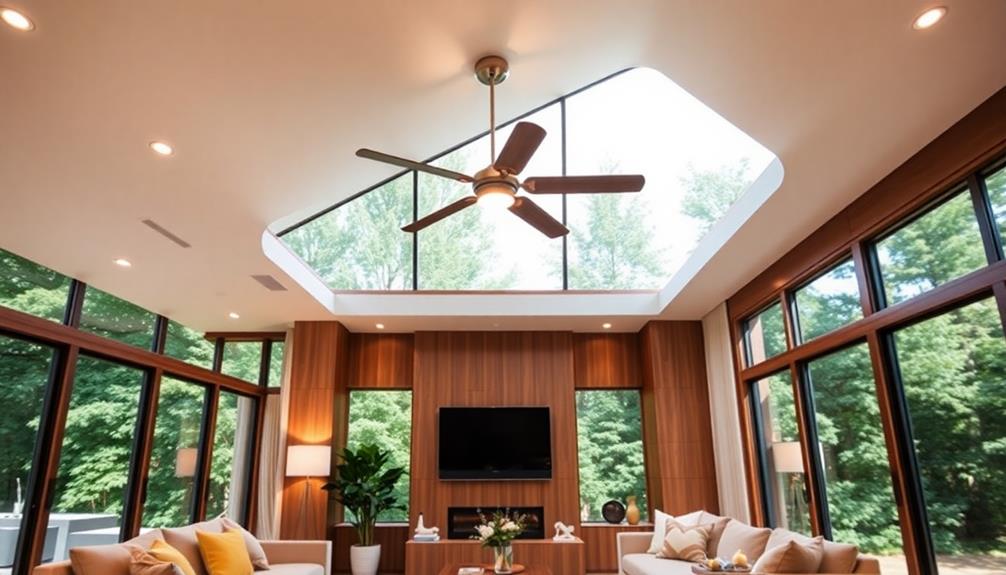
In contemporary German interiors, a strong preference for minimalist design often clashes with the bulky appearance of ceiling fans. You'll find that many homeowners prioritize clean lines and simplicity, making ceiling fans seem disruptive. Instead, they lean toward energy-efficient systems that align better with their aesthetic values.
| Preference | Popular Alternatives |
|---|---|
| Minimalist aesthetics | Portable air conditioners |
| Clean lines and simplicity | Window fans |
| Energy-efficient solutions | Innovative cooling tech |
| Dislike for bulky designs | Natural ventilation methods |
This cultural emphasis shapes how you choose cooling solutions, as sleek, unobtrusive options become more desirable than traditional ceiling fans. Ultimately, your interior design choices reflect a commitment to both aesthetics and sustainability.
Architectural Limitations and History
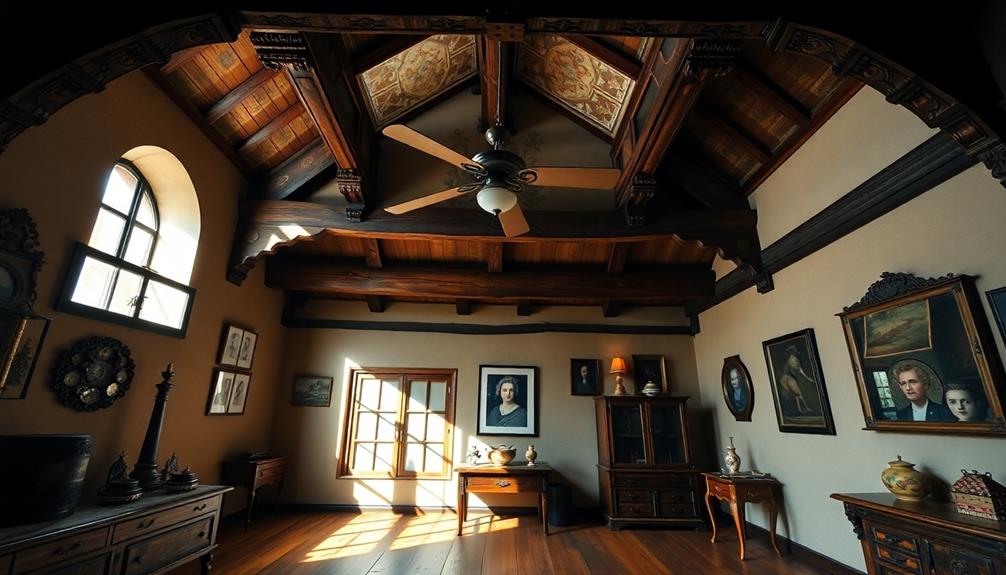
Many homeowners face challenges when considering ceiling fans due to architectural limitations in older buildings. These constraints often discourage the installation of fans, making them less practical.
Here are some common issues you might encounter:
- Many older homes have low ceilings, making fan installation difficult.
- Decorative architectural features complicate wiring and mounting.
- Building codes prioritize historical preservation, limiting modern additions like fans.
- Retrofitting can be cumbersome and costly, often deterring homeowners.
As a result, the historical focus on efficient heating further reduces the necessity for ceiling fans, pushing many to explore alternative cooling methods.
This blend of architectural and historical factors creates a unique dilemma for those looking to embrace ceiling fans in their homes. Many older homes feature intricate ceiling designs or period-specific aesthetics that can clash with the visual presence of modern ceiling fans. Incorporating reverse fan design insights allows homeowners to explore innovative solutions, such as fans that complement vintage interiors or serve dual-purpose functionality. These insights are particularly valuable when trying to balance preserving a home’s character with ensuring modern comfort and energy efficiency.
Popular Cooling Alternatives
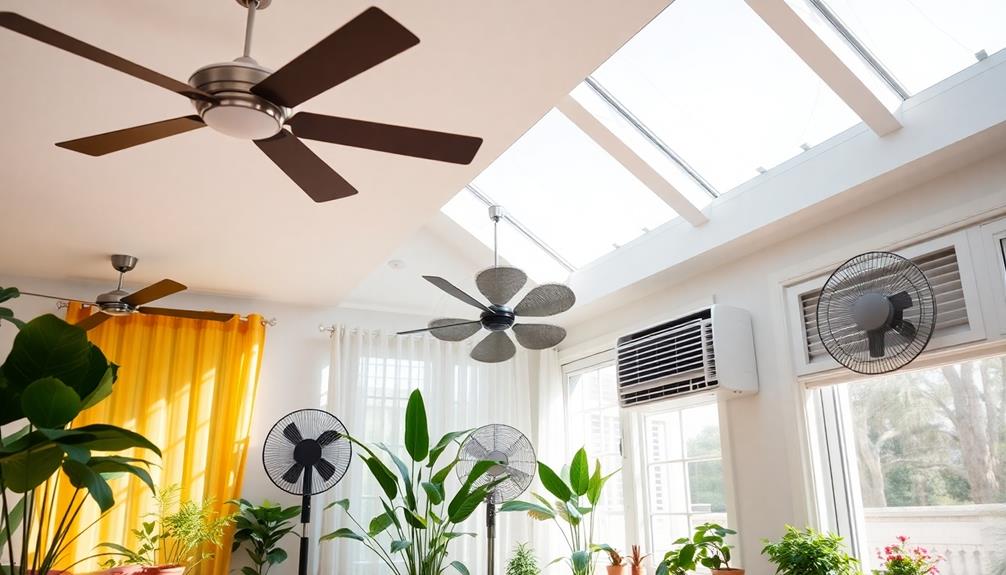
Considering the various limitations with ceiling fans, homeowners often turn to popular cooling alternatives that better suit their needs.
Portable air conditioners offer targeted cooling, making them a favorite for those seeking flexibility. You can easily move them from room to room, ensuring comfort wherever you are.
In addition, innovative technologies in energy distribution, such as AI-driven smart grids, are improving the efficiency of cooling solutions, making them even more appealing.
Window fans are another great option, as they draw in fresh air and enhance ventilation, keeping spaces cool without high energy costs.
Additionally, innovative cooling technologies, like evaporative coolers, are gaining traction, providing efficient solutions tailored for specific climates.
With these alternatives, you can create a comfortable environment while embracing practicality, aligning with both your lifestyle and the architectural nuances of your home.
Sustainability and Energy Efficiency
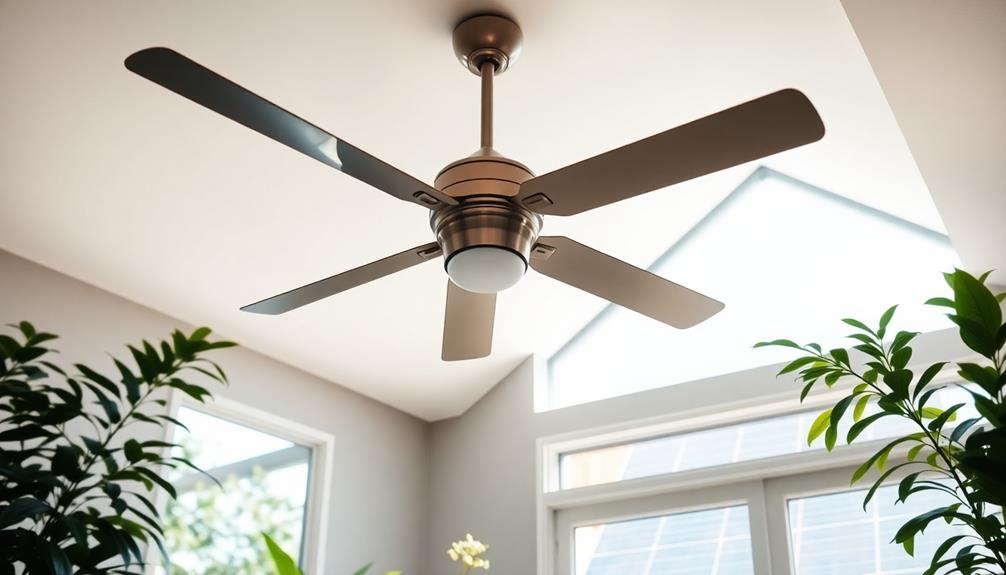
Exploring alternative cooling solutions not only addresses immediate comfort needs but also aligns with the growing emphasis on sustainability and energy efficiency.
You can take several steps to guarantee your cooling methods are both effective and eco-friendly:
- Choose energy-efficient appliances that consume less electricity.
- Utilize natural ventilation, like open windows, to cool your space without energy use.
- Consider portable cooling options that allow for targeted use, minimizing energy waste.
- Embrace innovative technologies that offer sustainable alternatives to traditional cooling methods.
Future of Ceiling Fans in Germany
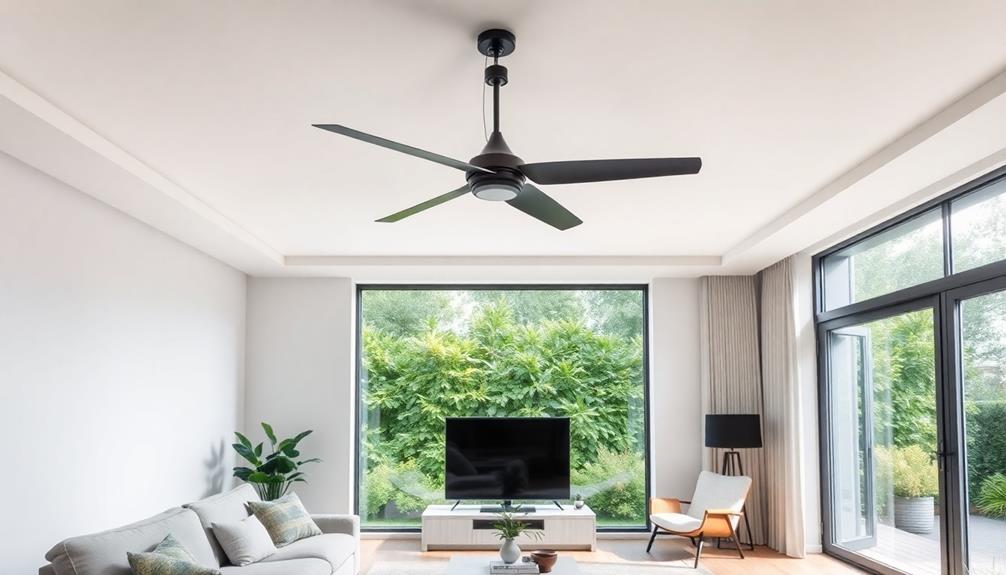
As climate change pushes for more energy-efficient solutions, the future of ceiling fans in Germany may see a shift in perception.
While traditional views favor air conditioning and natural ventilation, you might notice a growing interest in ceiling fans as people seek sustainable alternatives. Their ability to circulate air efficiently could appeal to those wanting to lower energy bills and reduce reliance on high-demand cooling systems.
Additionally, advancements in design technology could allow ceiling fans to blend seamlessly into minimalist interiors, addressing aesthetic concerns.
As awareness of energy conservation grows, you may find that ceiling fans regain popularity, especially if they align with Germany's commitment to sustainability and efficiency in home design.
Frequently Asked Questions
What Are the Health Benefits of Using Ceiling Fans?
Using ceiling fans can help you maintain comfortable temperatures, improving sleep quality and reducing heat-related illnesses. They circulate air, enhancing ventilation and providing relief during warmer months, ultimately promoting better overall health and well-being.
How Do Ceiling Fans Compare to Air Conditioning in Energy Costs?
When comparing ceiling fans to air conditioning, you'll find ceiling fans generally use less energy, resulting in lower costs. However, air conditioning provides more powerful cooling, which might justify its higher energy consumption in extreme heat.
Can Ceiling Fans Improve Indoor Air Quality?
Did you know that ceiling fans can improve indoor air quality by circulating air and reducing humidity? By using them, you're not just staying cool; you're also promoting a healthier living environment in your home.
What Are the Best Ceiling Fan Brands Available in Germany?
If you're looking for the best ceiling fan brands in Germany, consider brands like Westinghouse, Hunter, and Faro. They offer stylish designs and energy-efficient models that suit various preferences and home aesthetics perfectly.
Are There Ceiling Fans Designed Specifically for Low Ceilings?
If your ceiling feels like a cozy hug, you'll find low-profile ceiling fans designed just for snug spaces. They circulate air efficiently without overwhelming your room, blending functionality and aesthetics seamlessly. You'll love the comfort!
Conclusion
As you navigate the landscape of cooling solutions in Germany, think of ceiling fans as ships lost at sea, their sails unfurled but never catching the wind. The temperate climate, strict regulations, and a love for minimalist design keep them anchored in the harbor of tradition. Yet, as sustainability becomes the lighthouse guiding energy choices, there's a chance these ships might one day set sail, finding their place in German homes amidst the whirl of change.
